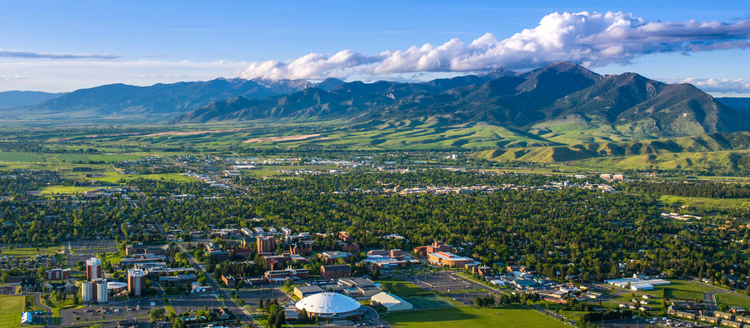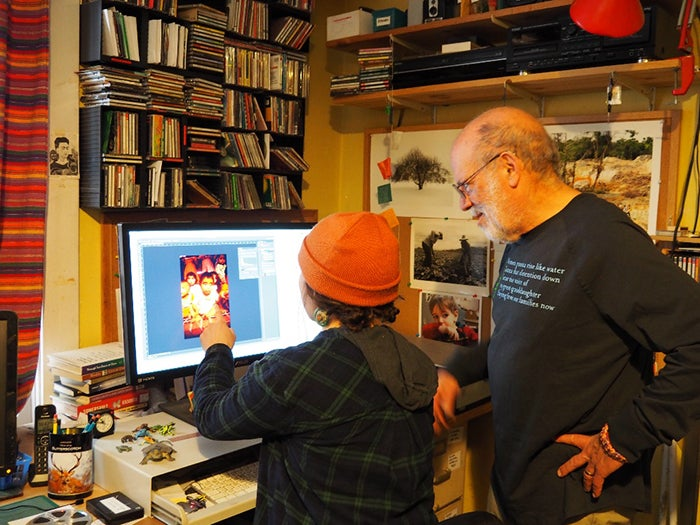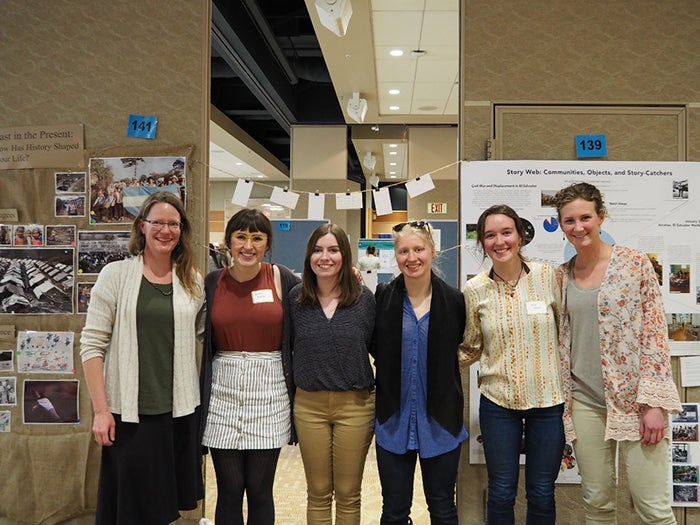Montana State University Invests in Student Success as an Adobe Creative Campus

As the world goes increasingly digital, universities must rise to the challenge and prepare students for success in rapidly changing workplaces. Many forward-thinking higher education institutions are investing in digital tools and working to infuse digital literacy, creativity, and communication skills into their learning environments.
Montana State University (MSU) takes its responsibility to student success seriously. Established in 1893, the university has taken a decisive step into the future with its decision to become an Adobe Creative Campus. It represents a strong investment in digital literacy, centered around providing Adobe Creative Cloud to all students and many faculty and staff.
“Students need to graduate with in-demand technology and creative skills, and universities have to prepare them for new demands in the workplace,” says Michael Trotter, VP of IT and CIO at Montana State University. “Adobe came to us as a true partner, and we saw a great opportunity to prioritize digital literacy by putting powerful tools in the hands of students and faculty.”

Interns in Molly Todd’s Public History Lab present their work with Project Solidarity at Montana State University’s Research Celebration in spring 2019. Students used Adobe InDesign to create the posters on the right panel. From left: Rachel Dunlap, Morgan Craig, Emma Folkerts, Ellie Nolan, and Jacey Anderson.
For MSU leaders, there were two compelling reasons to partner with Adobe. First, they wanted to make Adobe Acrobat DC available to everyone, improving accessibility of online course materials and department webpages. Second, the university wanted to bring digital literacy to the entire campus—not just in core creative subjects such as design, art, and photography, but also in general education courses such as history and math.
In rolling out Adobe Creative Cloud and Adobe Document Cloud, MSU has made great progress over the past year, focusing on getting faculty involved and ramping up student outreach.
“We wanted to encourage faculty to have their students complete colorful multimedia assignments that could replace traditional essays,” says Tess Meacham, eLearning Support Manager at Montana State University. “Students need to know these skills no matter what career they choose, which will set them apart as they graduate and enter the job market.”
Tess is part of MSU’s Academic Technology and Outreach (ATO) department, which works to make sure digital literacy takes hold across campus. One of its tactics was to create a student ambassador program, hiring students knowledgeable in Adobe Creative Cloud to support faculty members and their classes. These ambassadors keep office hours to help professors and students learn the tools through one-on-one tutorials and classroom visits.
Another crucial piece of expanding use across the university is a new Digital Literacy Course Enhancement grant—still in its first year.
“Our goal is to encourage faculty members to bring technology into the classroom and find innovative ways to combine creativity with learning outcomes,” Tess says. “This grant program is exciting because it casts a wide net, reaching academic subjects that aren’t traditionally associated with digital technologies and visual design.”
Among the 10 inaugural year recipients are professors in business, history, mathematics education, molecular biology, Buddhism, human development, film, and agriculture—all working to integrate digital literacy into their curriculum.

Rachel Dunlap, a senior studying Global and Multicultural Studies and History, receives training in Adobe Photoshop with professional photographer and Project Solidarity contributor Steve Cagan in January 2019. Dunlap went on to co-coordinate the Public History Lab at Montana State University and now serves as an Adobe ambassador.
Reimagining mathematics in the digital age
One notable grant recipient is Mary Alice Carlson, assistant professor of mathematics education. She teaches courses focused on math content for teachers and designs curriculum to help them explain complex mathematical concepts in K-12 classes.
A few years back, she helped develop a course called Ratio and Proportion in School Mathematics, which is scheduled to start in the 2020 spring semester. She thought it would be an ideal opportunity to introduce Adobe Creative Cloud to the aspiring teachers in her class.
“Ratio and proportion are crucial but challenging concepts to teach and learn as students transition from elementary school to high school,” Mary Alice says. “My goal is to link these concepts to students’ everyday lives, building what we call a strong math identity. It occurred to me that Adobe Creative Cloud could be an effective way for teachers to connect the dots.”
Mary began to look for ways to incorporate visual elements into the curriculum, using tools such as Adobe Spark and Adobe Muse to capture students’ experiences and environments. That could be a photo of gas prices at a local gas station or a video of a bridge students cross to get to school—visual elements that help embed math into their daily lives.
She also sees the cloud-based tools as a way to enable digital collaboration on curriculum and distance learning—both for her own classes and for K-12 teachers working in rural areas. “With all these tools online, I’m really interested in how we can develop and share lessons, whether in higher education or in K-12,” Mary Alice says.

Interns in Molly Todd’s Public History Lab present their work with Project Solidarity at Montana State University’s Research Celebration in spring 2019. Students used Adobe InDesign to create the posters on the right panel. From left: Molly Todd, Rachel Dunlap, Morgan Craig, Emma Folkerts, Ellie Nolan, and Jacey Anderson.
Making historical research relevant now and in the future
Another grant recipient is Molly Todd, Latin American History professor, who tries to make her courses as relevant as possible to students, many of whom, she admits, are there only to fulfill general education credits.
“I like to assign projects with real-world impact and use methods from ‘applied’ fields like public history and oral history,” Molly says. “I also want to make assignments fun, and that’s where Adobe Creative Cloud comes in.”
Molly’s co-curricular Public History Lab offered an ideal testing ground for Adobe Creative Cloud. In collaboration with Project Solidarity, a transnational public history collaboration, she and her student interns used Adobe InDesign to create posters for their workshops with former refugees in El Salvador. That small, successful experiment spawned many new opportunities.

Interns in Molly Todd’s Public History Lab presented their work with Project Solidarity at Montana State University’s Research Celebration in spring 2019. Here, a visitor to the exhibit examines the posters that the interns created using Adobe InDesign.
For instance, one of Molly’s graduate students produced a poster for an Oral History Association meeting, where she was invited to present. And one of her undergraduate students—both an artist and an Adobe ambassador—is using Adobe InDesign and Adobe Spark Post to design posters and t-shirts for human rights non-governmental organizations (NGOs).
Now the Adobe Creative Cloud tools are ready for primetime in Molly’s graduate-level oral history methods seminar. Students are preparing for a big public event where they will present results from their interviews with U.S. military veterans. They are using Adobe Spark Post to create posters, programs, and social media notices for the event, and Adobe Audition to edit interview clips, mini-podcast-style. “The idea,” Molly explains, “is to help them learn how to communicate the same information to different audiences, bringing out their creativity and boosting digital literacy.”
Communicating value to the public
As an Adobe Creative Campus, MSU uses digital tools to fulfill a mission it has pursued for more than 125 years. Its charter as a public research institution means it has a duty to bring scientific findings to the surrounding community—covering everything from soil sciences to Native American studies.
“With greater digital literacy and Adobe Creative Cloud tools, we can make our research more accessible to the public,” says Tess. “Whether that involves using infographics or other visually appealing media, Adobe helps us communicate the benefits of MSU research more effectively, and that’s central to our mission as a publicly funded research institution.”
As an Adobe Creative Campus, MSU has committed to digital literacy and invested in student success by providing Adobe Creative Cloud tools to its entire student body and staff. Learn more.